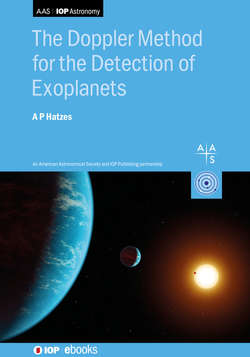Читать книгу The Doppler Method for the Detection of Exoplanets - Professor Artie Hatzes - Страница 38
На сайте Литреса книга снята с продажи.
2.3.11 Persistence
ОглавлениеSuppose you have recorded an image with a CCD that had high intensity values (in particular saturated pixels). If you take a subsequent dark exposure, you may find that instead of being completely dark, the frame has a memory, or residual image, of the previous exposure. This effect is called persistence and is an extraneous signal that is not removed by flushing (reading out) the CCD. It is caused by electrons generated in the previous exposure that are trapped at impurity sites on the detector. The electrons that are released in subsequent exposures appear as a residual image (Figure 2.23). The time it takes for the trapped electrons to be released depends on the device.
Figure 2.23. Residual images in a CCD. (Left) An image of a star with a high count level. (Right) An image of the CCD after reading out the previous exposure. There is a low-level (a few counts) image of the star remaining on the CCD.
For infrared (IR) arrays, the persistence effect can be larger than that for CCDs. Figure 2.24 shows the persistence measured for a Hawaii 4 IR array used by the European Southern Observatory. For an exposure level of 100,000 detected electrons, after 30 s, the residual image has approximately 250 electrons. This is not so much of a problem if the next exposure is also at a high intensity level (a 0.25% effect). However, a subsequent exposure with, say, 10,000 detected electrons (S/N = 100) means that it will be contaminated by the spectrum of the previous star at the 2.5% level. This contamination will influence your RV measurement.
Figure 2.24. Residual images in a CCD. (Left) An image of a star with a high count level. Persistence as measured in a Hawaii 4 infrared detector. (Data courtesy of ESO.)
Persistence in optical CCDs is generally small, and this author, for one, has never had to worry about it. This is particularly true if you are only achieving a modest RV precision of greater than, say, 10 m s−1. However, it you really want to measure ultraprecise RVs below 1 m s−1 or in the cm s−1, then persistence in your device should be measured to assess if this is a problem.
Persistence can be handled in three ways:
Limiting the intensity levels of the observation.
Flushing the CCD with dark bias frames a number of times to reduce the intensity of the residual image. However, this reduces the efficiency of your observations.
Treating the contamination from the previous observations in your data reduction pipeline.
